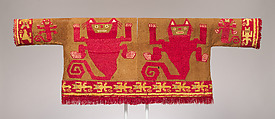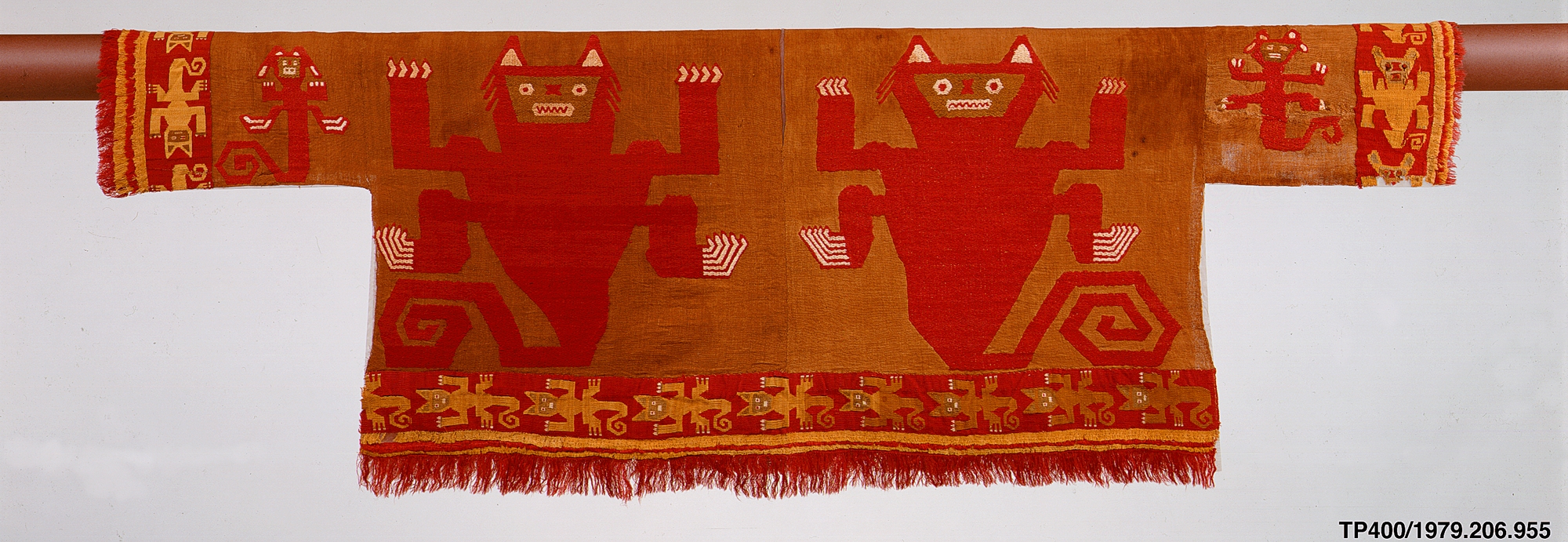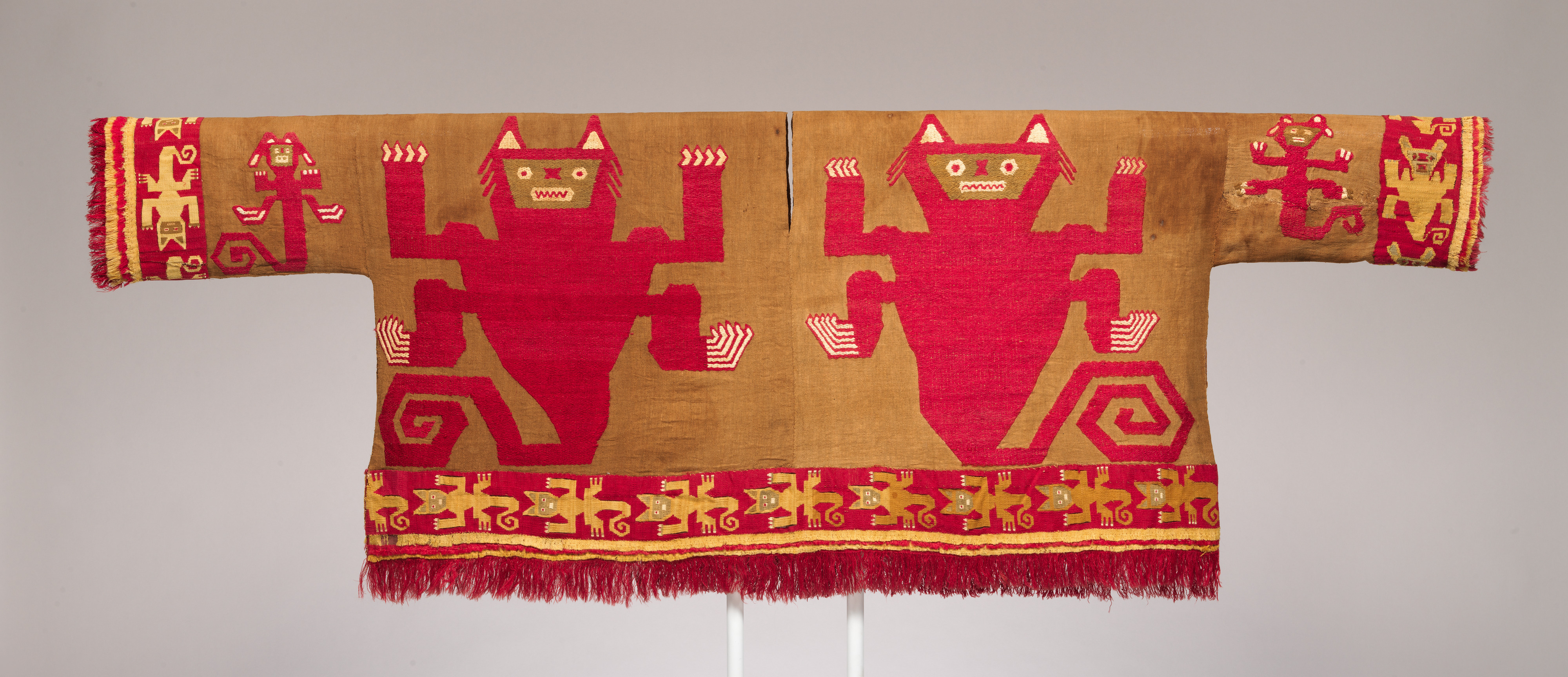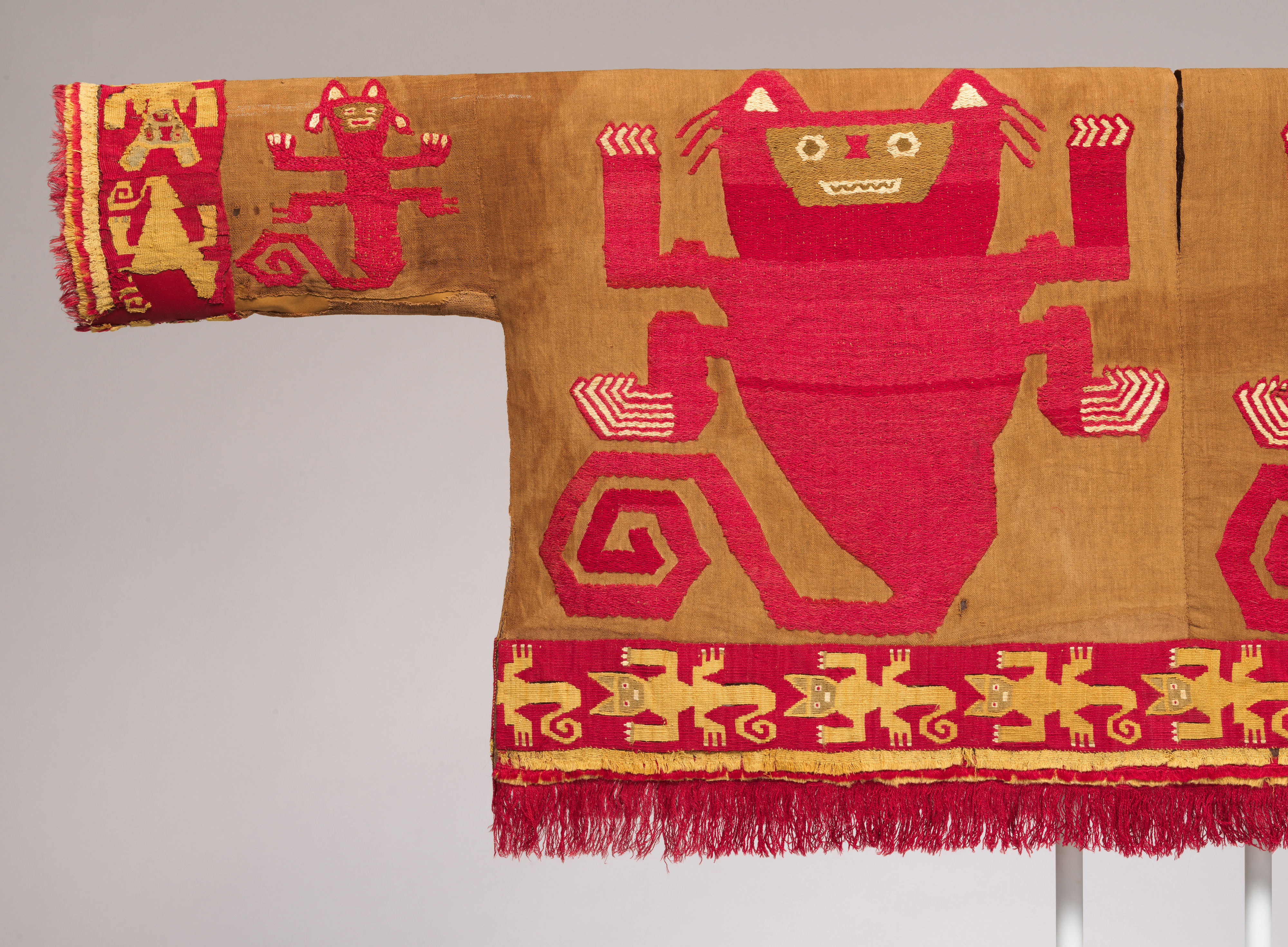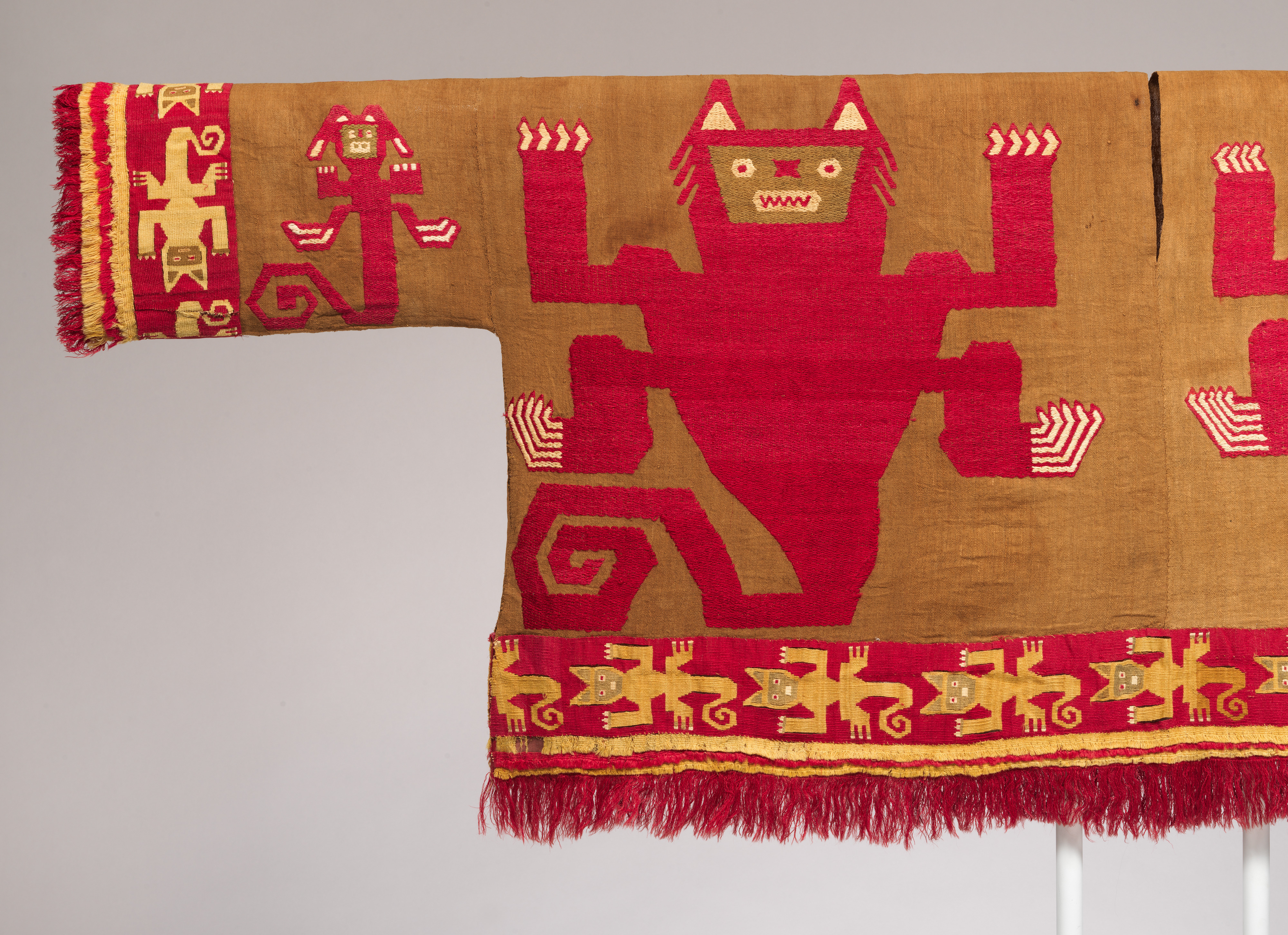Tunic with Felines
High-status men in the ancient Andes wore finely woven tunics. This sleeved example, made by weavers on Peru’s North Coast, displays some of the features of the highest-quality garments produced by artists of the Chimú culture (also known as the Kingdom of Chimor), one of the many societies to thrive in the Andean region prior to the rise of the Inca Empire in the 15th century. Using dyed camelid yarns imported from the highlands and local cotton, the composition features two large splayed feline figures with extended claws, along with smaller felines repeated on the sleeves and lower border.
Chimú weavers would often combine multiple techniques on a single garment. This sleeved tunic combines brocade—the large red felines were woven with a raised pattern—with plain weave, embroidery, and, for the borders, tapestry weave. Characteristic of Chimú textiles, the lower border is finished with a fringe. Likely the work of at least two weavers, the garment was composed in parts: the tapestry borders, for example, were woven separately and then attached. Depictions of weavers found on ceramics from earlier periods suggest that different parts of a garment were worked simultaneously and then joined together. Senior weavers may have produced the brocaded felines, given their increased complexity and scale. Less-experienced artists surely worked on other portions, such as the sleeves and borders. The two large felines themselves were undoubtedly created by different weavers: their heads, for example, vary significantly in both shape and size. The tapestry borders show the clearest difference in weavers, as the border along the proper left sleeve is starkly divergent from the others. While the overarching design of the borders remains congruent with the prevailing motif of snarling felines, the size, color, and facial features are different.
The tan, red, and yellow colors along with the subject matter—ferocious cats—suggest that this shirt was made in a later period of Chimú weaving, perhaps just after the Kingdom of Chimor fell to Inca forces in the late 15th century. The theme of menacing felines, with their prominent claws, pointed ears, and curled tails, is less common than maritime subjects in Chimú textiles. Felines are often considered a symbol of political power in the ancient Americas, and the repetition of felines in a rampant or threatening position may have served an apotropaic function, that is, it may have been thought to have protective qualities.
Maximillion A. Alegria, Adrienne Arsht Intern, 2024
References and Further Reading
Rowe, Ann P. Costumes and Featherwork of the Lords of Chimor: Textiles from Peru's North Coast. Washington, DC: Textile Museum, 1984, p. 39, no. 4.
Bjerregaard, Lena, and Torben Huss. PreColumbian Textiles in the Ethnological Museum in Berlin. Zea E-Books, no. 52. Lincoln, NE: University of Nebraska–Lincoln, 2017.
Costin, Cathy Lynne. “Textiles and Chimú Identity under Inka Hegemony on the North Coast of Peru.” In Cross-Threading Textile Economies with Value, Sanctity, and Transnationalism, edited by W. Little and P. McAnany, 101–123. Lanham, MD: AltaMira, 2011.
D’Harcourt, Raoul. Textiles of Ancient Peru and Their Techniques. Seattle: University of Washington Press, 1962.
Ikehara-Tsukayama, Hugo C. The Cupisnique-Chavín Religious Tradition in the Andes. Oxford Research Encyclopedia of Anthropology, 2023.
Museo Chileno de Arte Precolombino and Carole Sinclaire. Chimú: Laberintos de un Traje Sagrado = Chimú: Labyrinths of a Sacred Costume. Santiago, Chile: Museo Chileno de Arte Precolombino, 2018.
#1651. Various Textile Objects
This image cannot be enlarged, viewed at full screen, or downloaded.
This artwork is meant to be viewed from right to left. Scroll left to view more.
